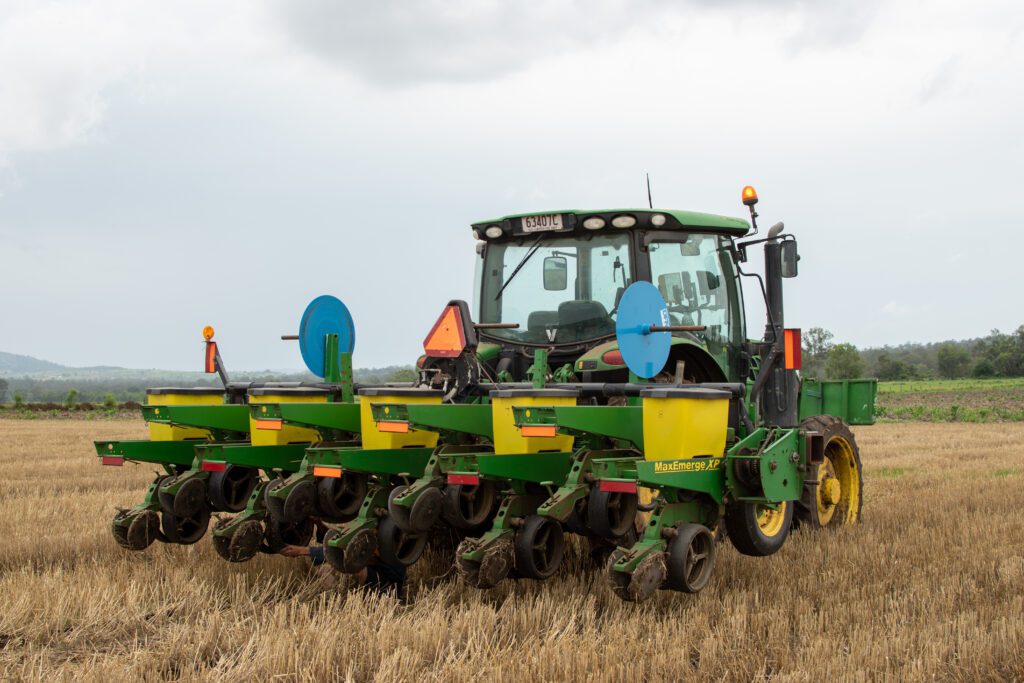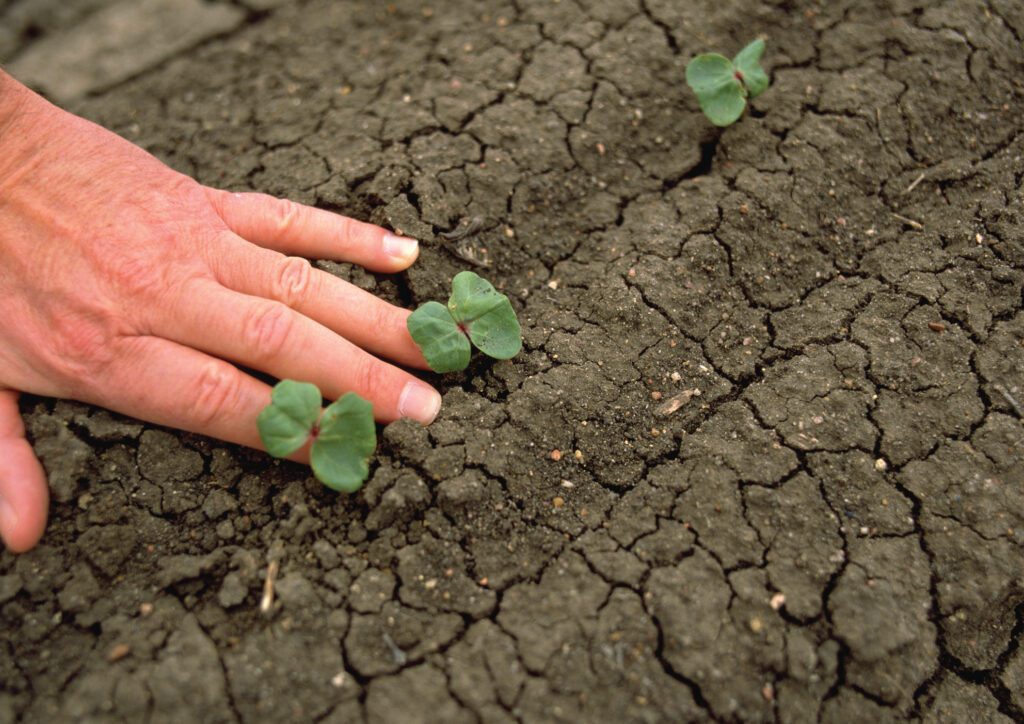What’s happening?
Planting is underway across most of Australia’s cotton-growing regions, with crops already emerging in warmer climates while southern growers wait for temperatures to rise before beginning their 2025/26 season.
Cotton Australia General Manager Michael Murray said the outlook is positive, with Australia’s 1,500 cotton growers, 90% of them family farmers, expected to generate just over 4 million bales or around 910,000 tonnes of quality fibre, and close to 1.1 million tonnes of cotton seed.
“This year we are expecting about 393,000 green hectares to be planted, predominantly in New South Wales and Queensland, with crops also being planted in the Northern Territory and Western Australia,” Mr Murray said.
“If expectations are accurate, we will see more than $2.7 billion generated for the national economy, with most of that money filtering down into the 249 communities that benefit directly from cotton growing.”
October is the month when most growers begin planting cotton. However, planting and picking dates can vary due to differing conditions, with some regions planting and picking in the same month.
Why it matters
The global outlook for cotton is stable, and while the price is flat, demand for Australian cotton continues due to its quality and strength.
Mr Murray said, “We have witnessed prices of up to $1000 per bale but the latest trends show the price hovering around $550 per bale, with the price outlook suggesting a $600 per bale is possible in the next 12 months.”
“We export everything we produce, and thankfully demand is still strong with recent figures from cotton marketing news service Cotton Compass revealing that in July 26% of bales exported went to China, 19% to India, 15% to Vietnam, and 13% both to Bangladesh and Indonesia.”
“In general, our growers remain positive on this season’s crop, and while it varies from region to region, many are reporting good conditions including soil profiles and moisture content. The availability of water is still an issue with some regions like the Central Highlands of Queensland having no new allocations, relying on existing supplies and the prospect of new allocations if rainfall increases dam levels.”
Local Impact
In the Darling Downs, no planting had yet occurred, with growers waiting on soil temperatures to rise. The main planting window opens in October and extends until the end of November. Around 36,000 hectares of irrigated cotton and 12,000 hectares of dryland are anticipated for the 2025/26 season. Rainfall over winter months has led to mostly full water storages and good soil moisture profiles. Ginning from the 2024/25 crop is expected to be finished by the end of October.
By the Numbers
• Australian growers are expected to produce over 4 million bales of cotton this season.
• The industry is projected to contribute more than $2.7 billion to the national economy.
• Around 393,000 hectares of cotton will be planted across the country.
• There are approximately 1,500 cotton growers, with 90% being family farmers.
• In July, 26% of exports went to China, 19% to India, 15% to Vietnam, and 13% each to Bangladesh and Indonesia.
• Cotton prices currently hover around $550 per bale, with forecasts suggesting a rise to $600 per bale within the next 12 months.

Zoom In
In Queensland, planting has started across several key regions.
In the Central Highlands, planting began in early August, with most crops already showing healthy plant growth due to good soil moisture and warm ground temperatures. Although water allocation is 0% this year, around 14,000 hectares of irrigated cotton are still expected, supported by carry-over irrigation water and hopes of follow-up rain. Around 4,000 hectares of dryland cotton are also expected. Ginning will continue through to November, with some cotton still being carted in from northern Queensland growers.
In the Dawson and Callide Valleys, some growers have started planting the expected 8,500 hectares of irrigated cotton, while others will plant in October. Dryland growers are expected to plant in November. Full allocations have provided a good start to the cotton season.
In the Brisbane Valley, some planting began on August 28, with seedlings emerging seven days later due to good conditions.
In the Macintyre Valley, growers will start planting after the long weekend when soil temperatures increase. Around 20,000 hectares of irrigated and 8,000 hectares of dryland cotton are expected.
In St George, Dirranbandi, and Mungindi, September temperatures have followed averages, with soil temperature sites suggesting good conditions for planting. Some growers have already started planting. St George and Dirranbandi will plant around 18,000 hectares of irrigated cotton, and Mungindi around 15,000 hectares of irrigated and 5,000 hectares of dryland cotton.
Zoom Out
In the Northern Territory, isolated showers were seen in late September, with crop destruction to be completed before mid-October. Planting windows will open on December 1 for the NT and January 1 for the Ord region. Predictions for 2025/26 plantings remain similar for the NT, around 10,000 hectares. The Ord is likely to increase to around 15,000 hectares, and Far North Queensland growers are optimistic for an increase to around 5,000 hectares.
In Northern NSW, wet conditions delayed ground preparation, but some early planting began in late September, with most to commence by mid-October.
In the Macquarie Valley, pre-watering and planting are expected to start from October 12. Around 25,000 hectares are expected to be planted.
In Southern NSW, planting will begin in early to mid-October, though with reduced water allocations, the total planted area will be 40–50% lower than last year.
What to look for next?
Growers will continue to monitor conditions closely, with rainfall and dam inflows likely to influence planting progress and water availability in the coming months.
